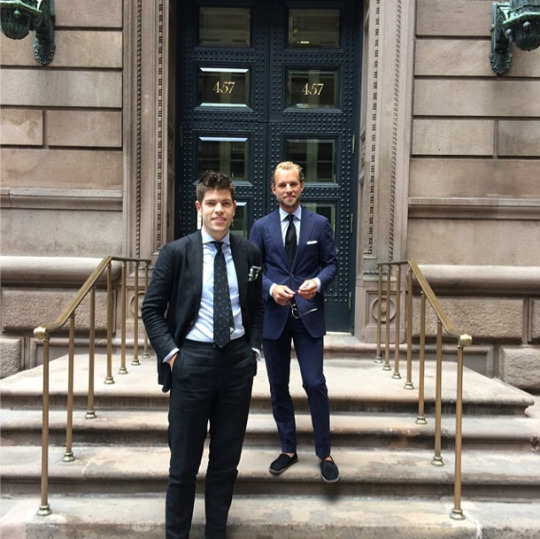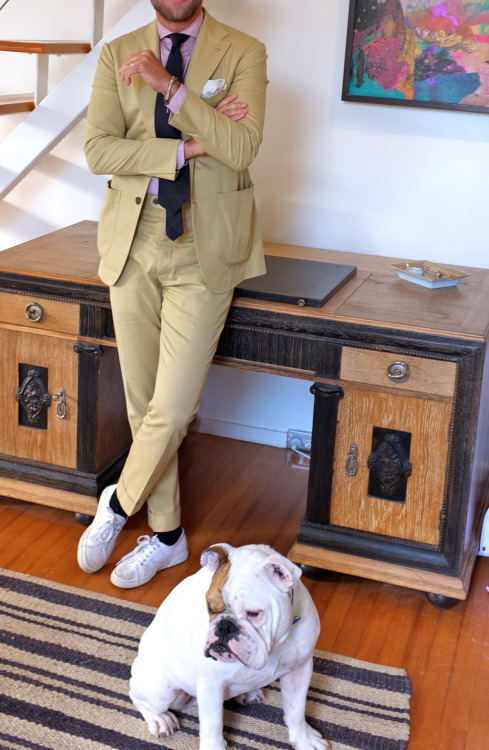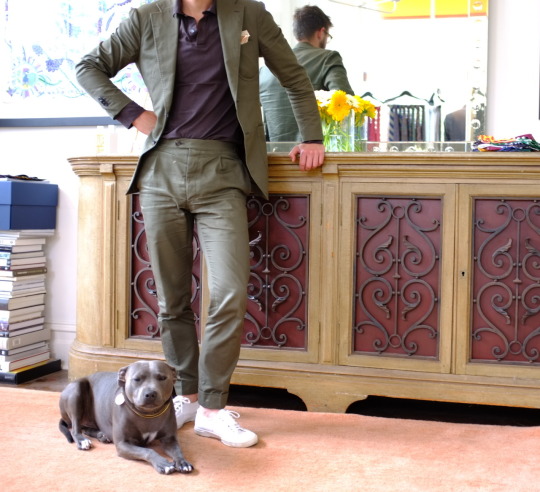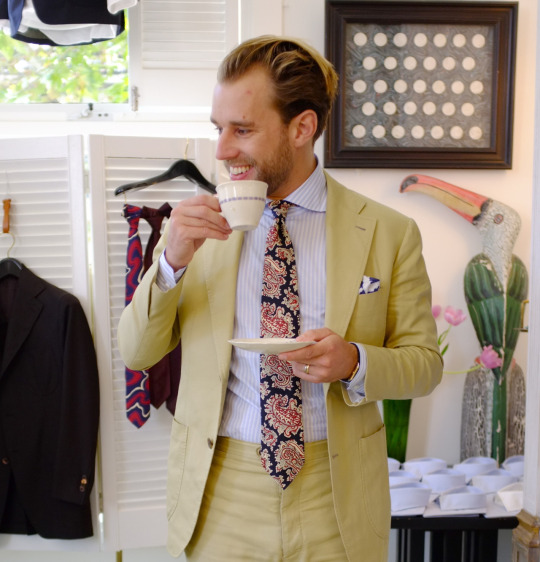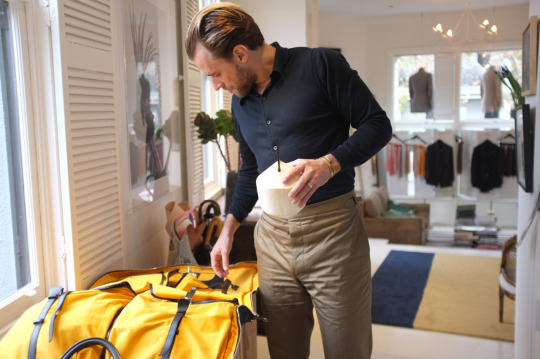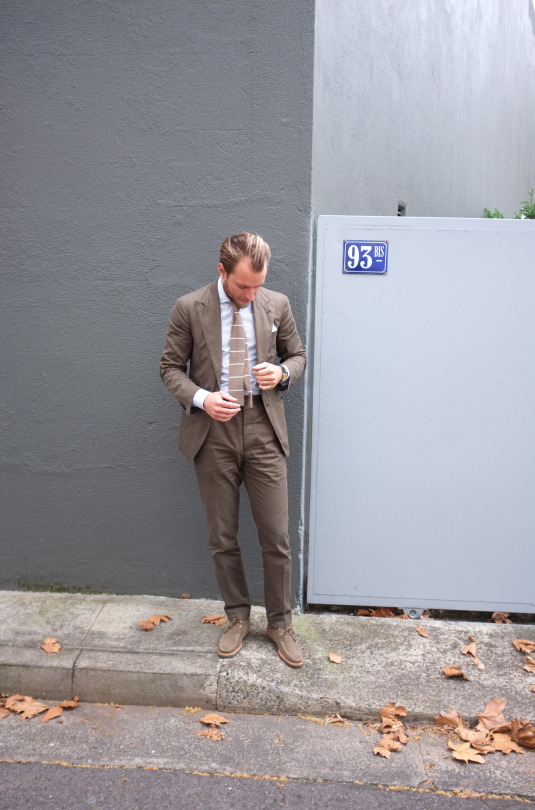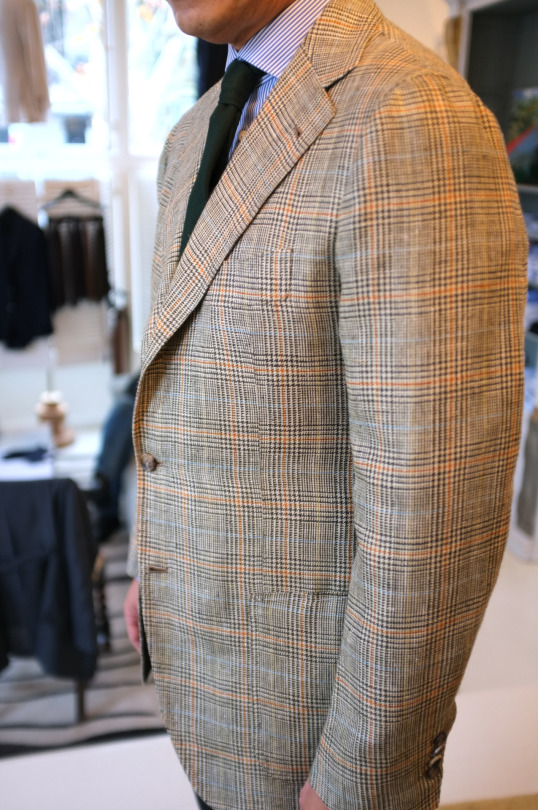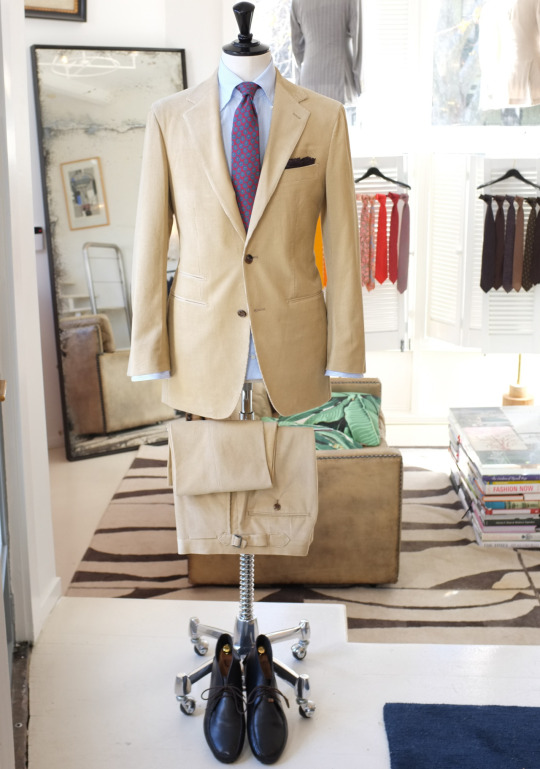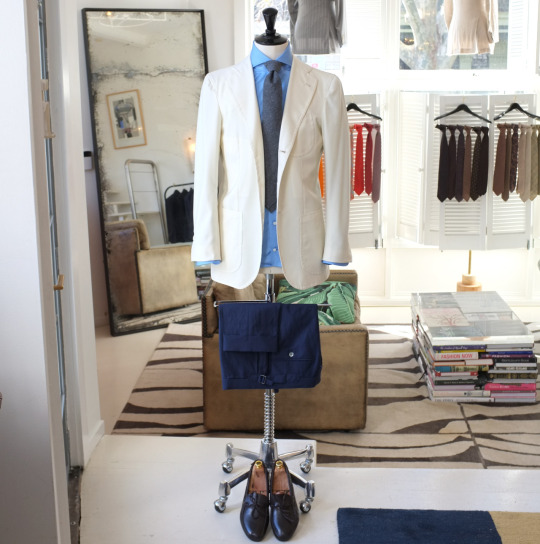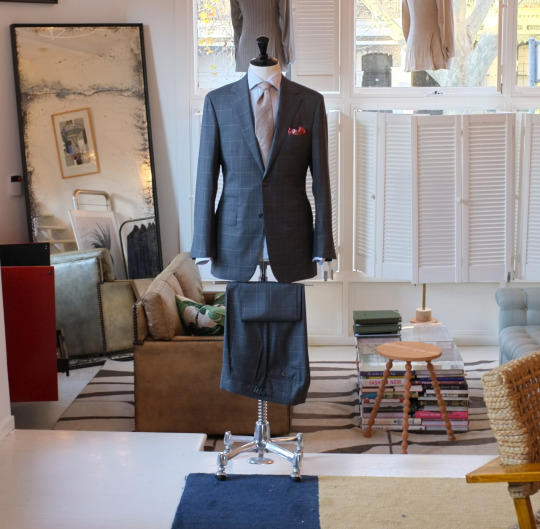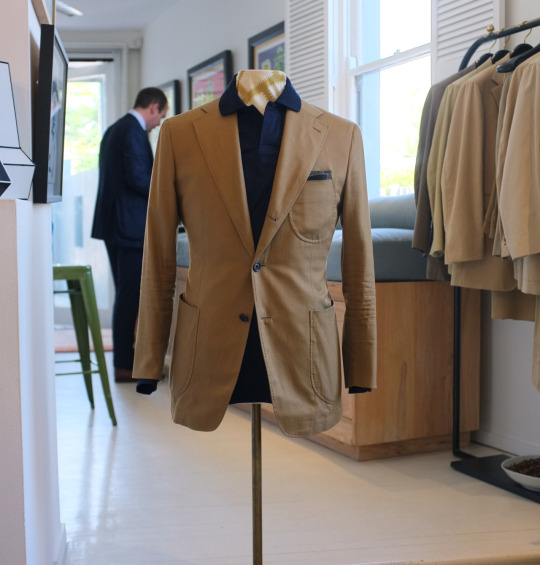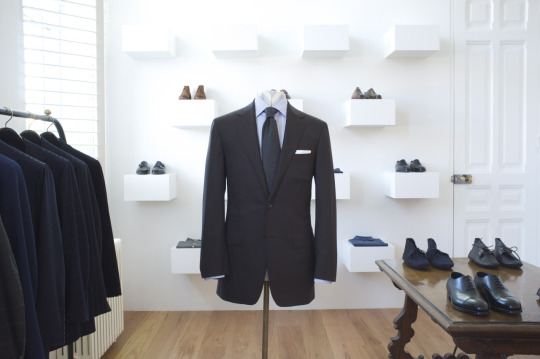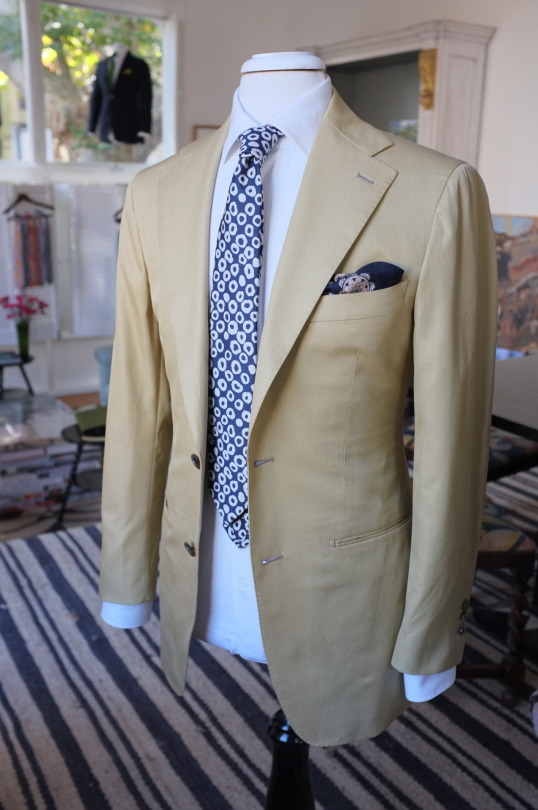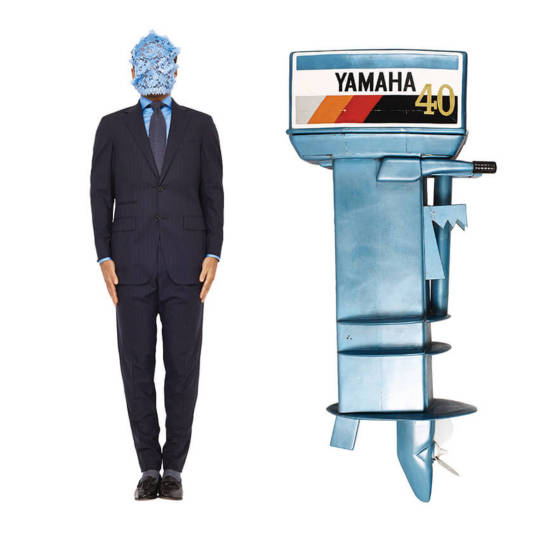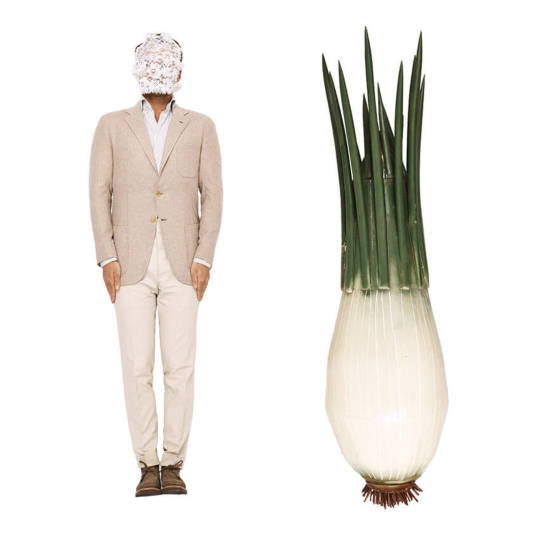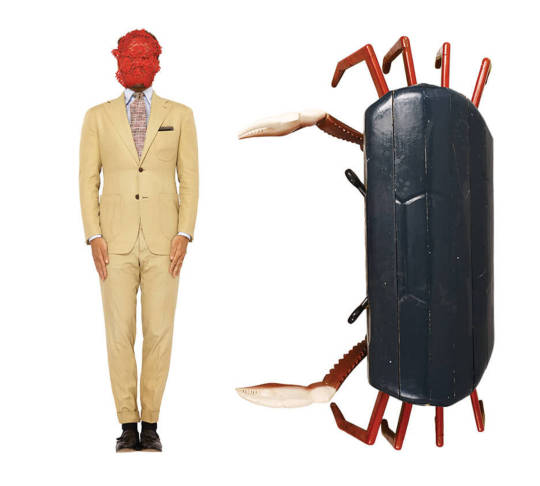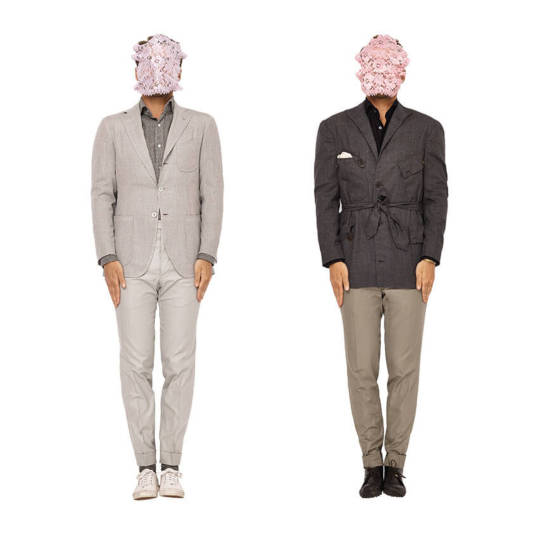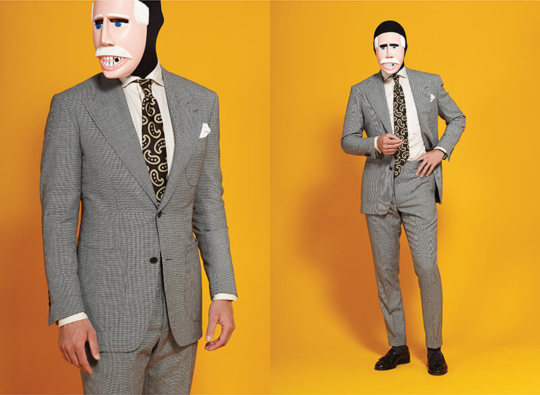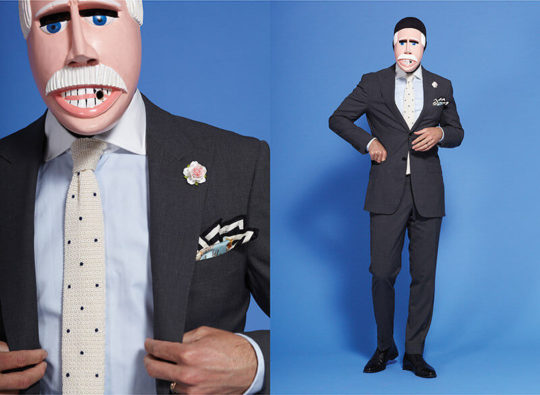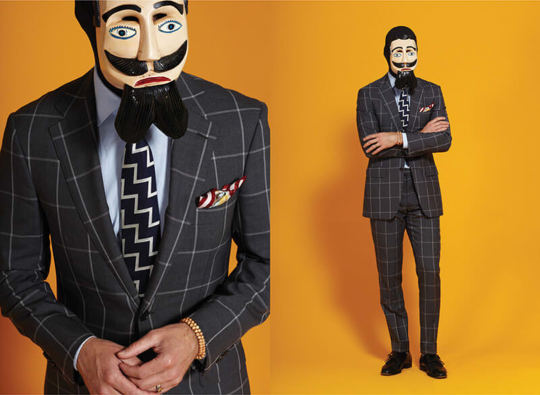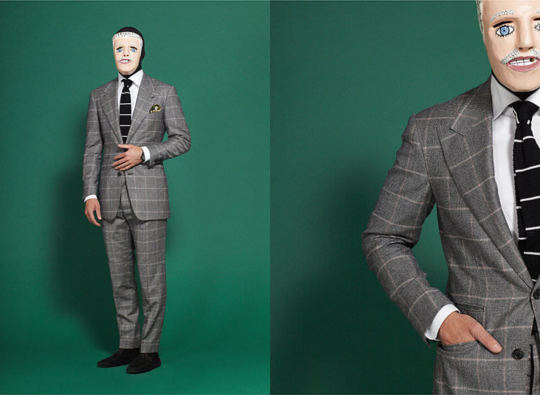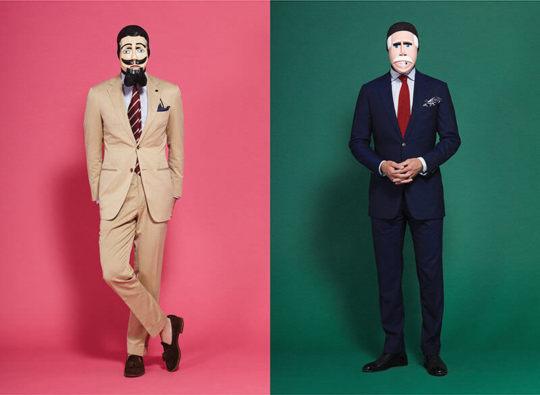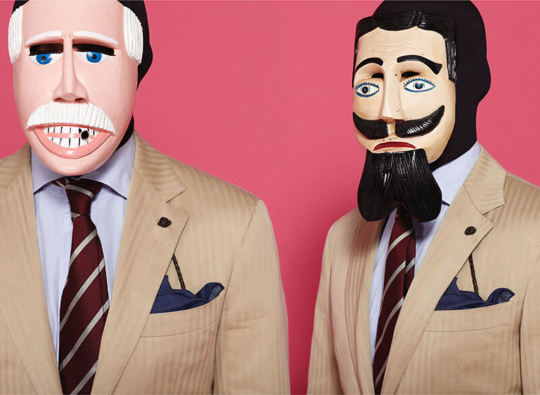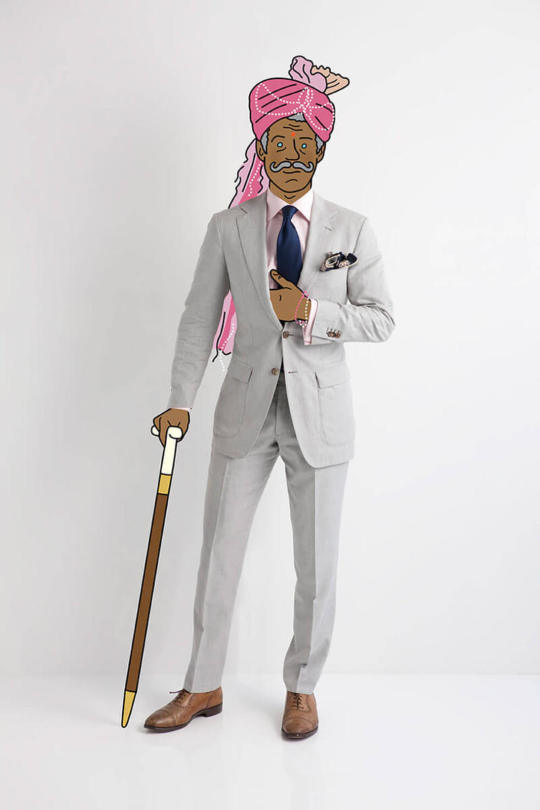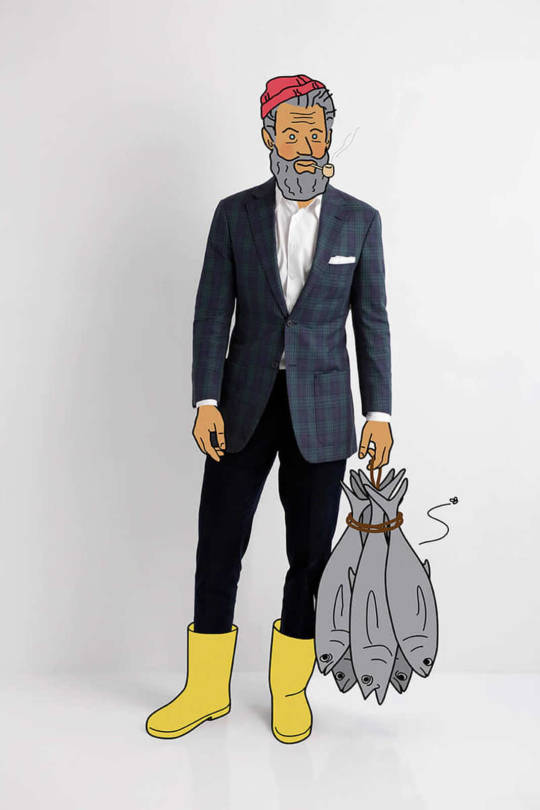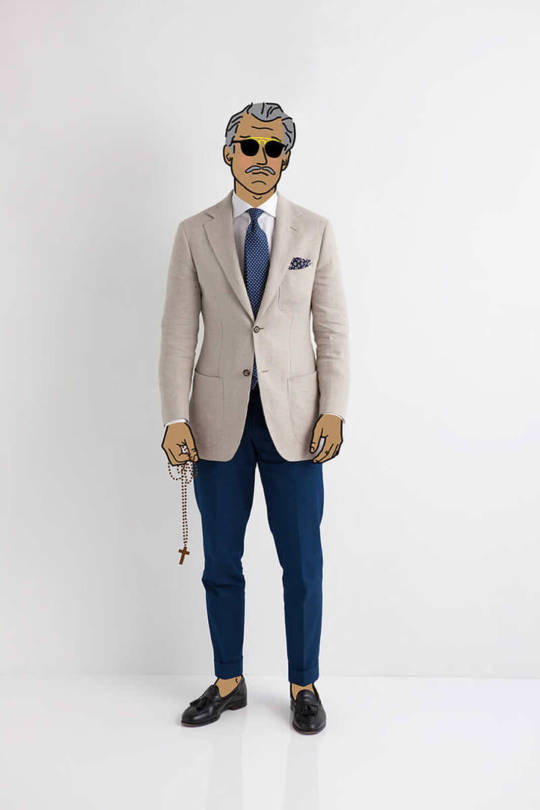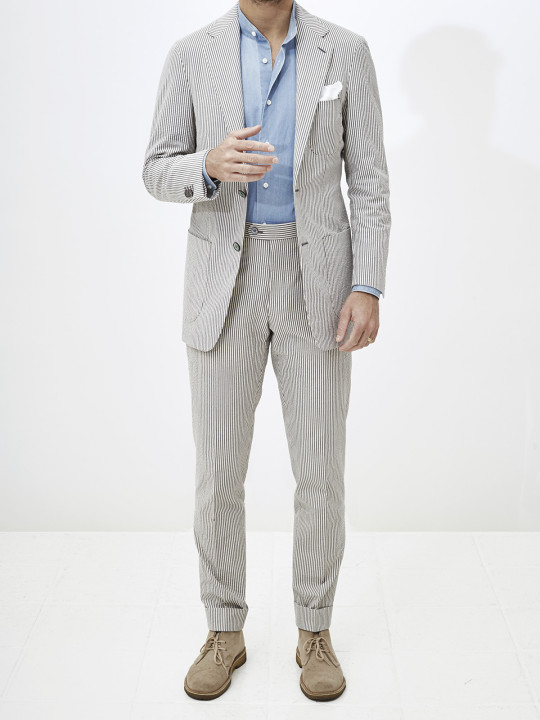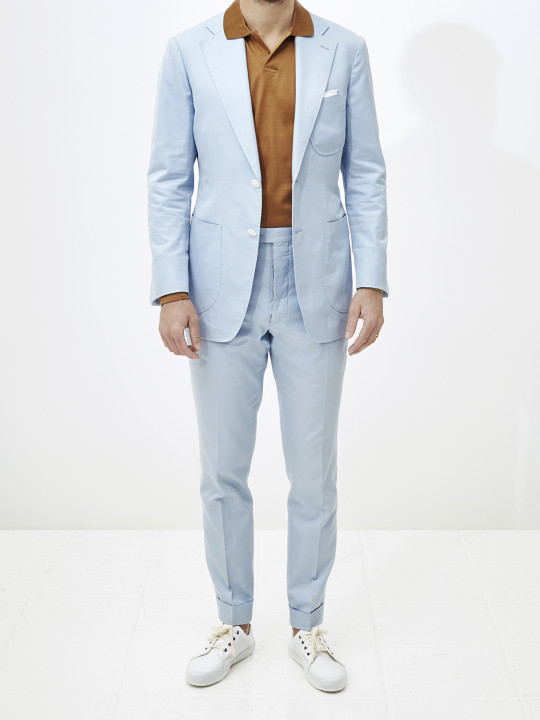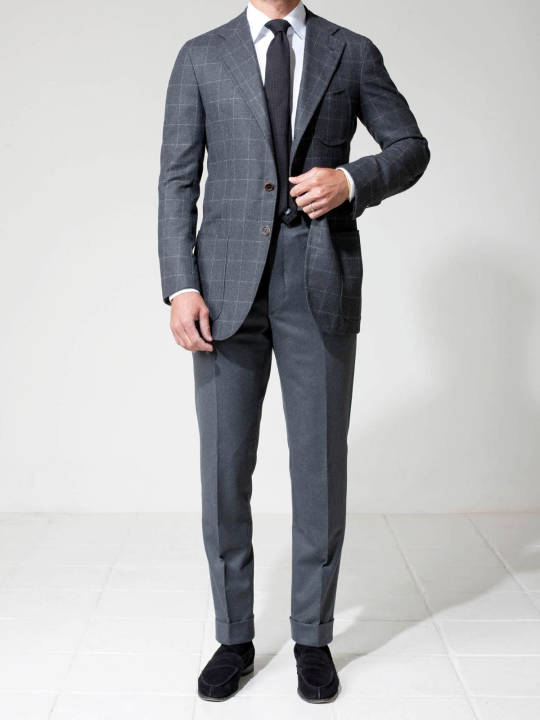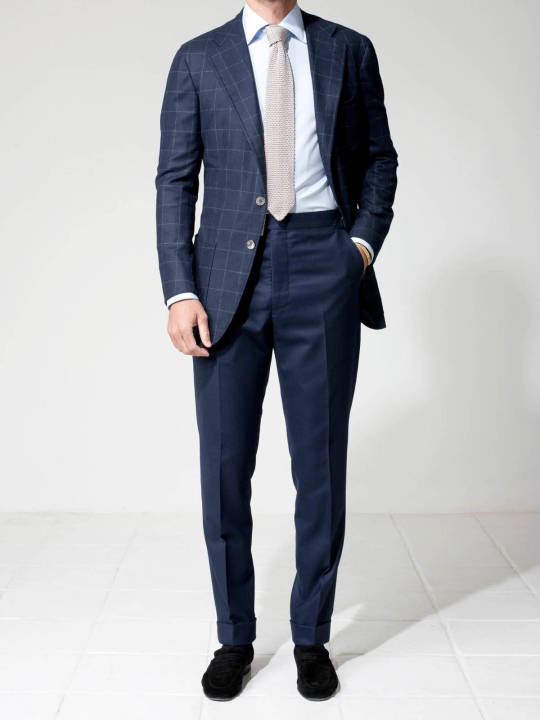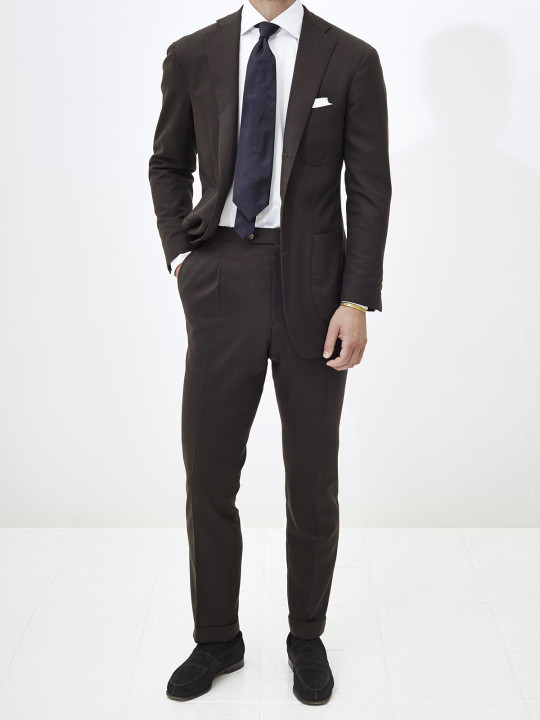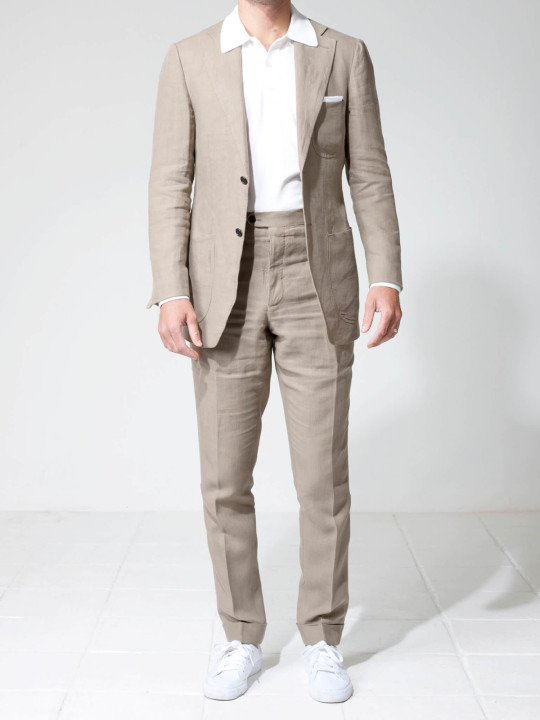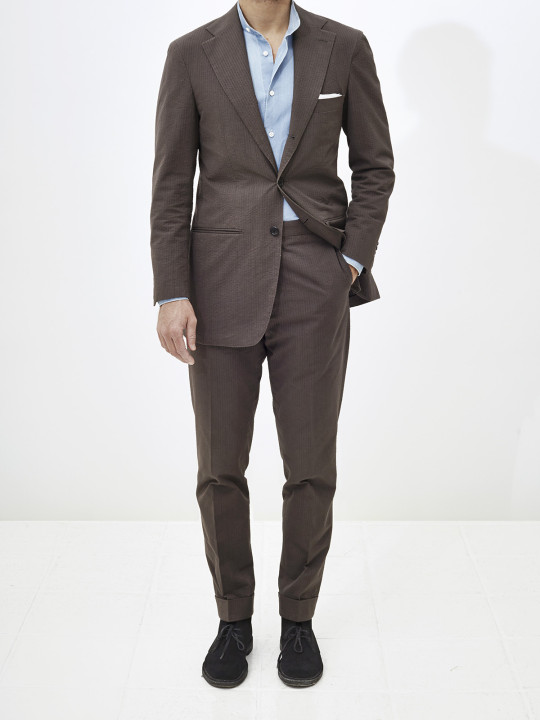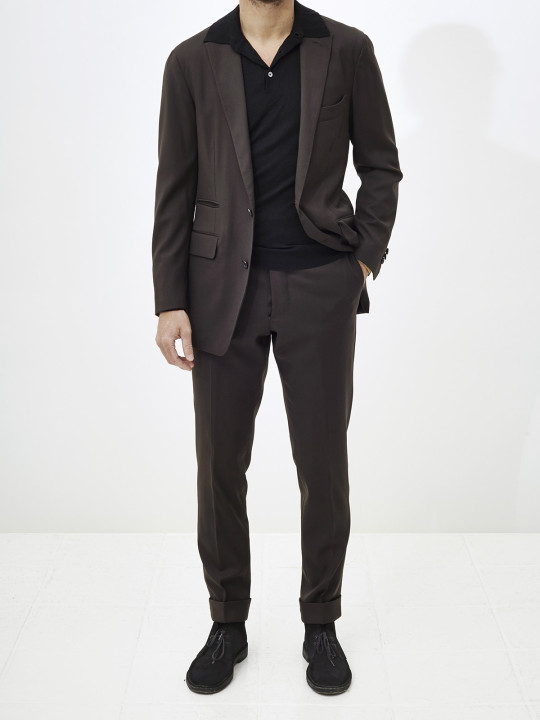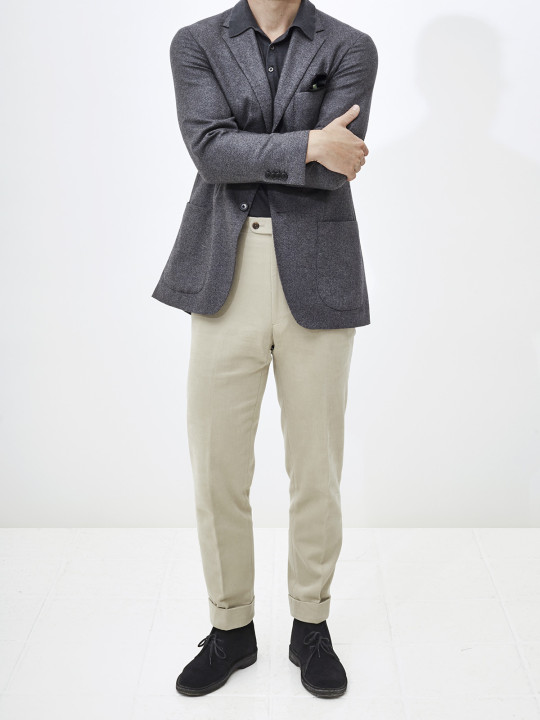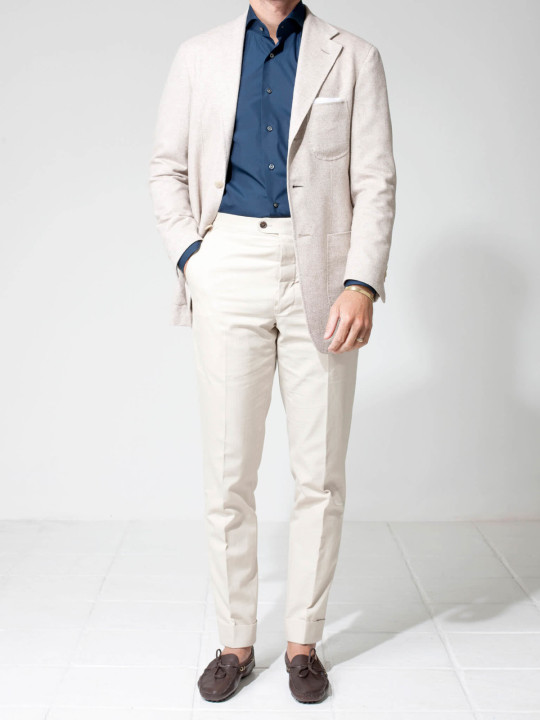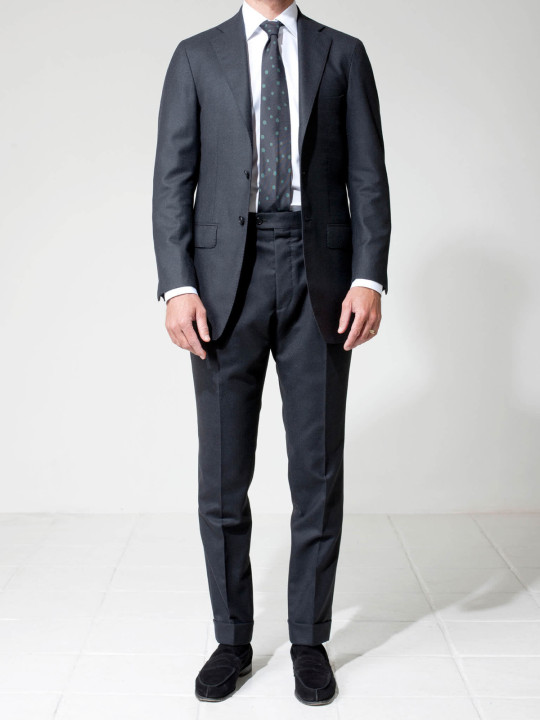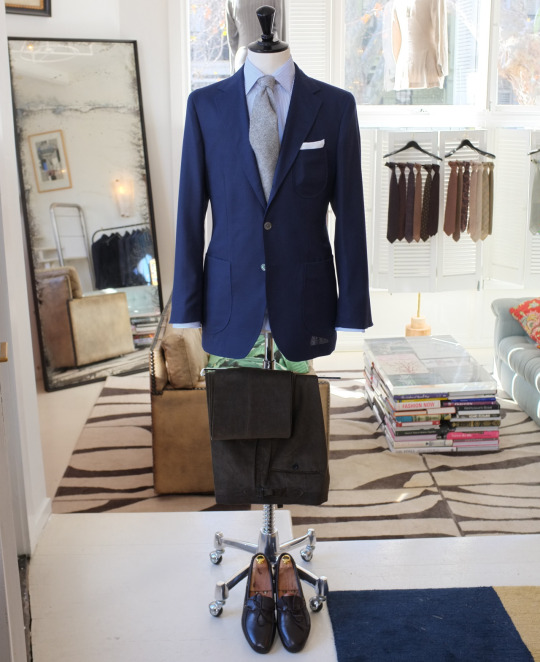
I had a nice chat with Patrick Johnson and one of his sales reps, Remy Ghougassian, a few weeks ago. The two were in San Francisco fitting customers, so we met after hours at the St. Regis hotel to chat over drinks. Since they just moved to New York City, I asked if they’ve found any cultural differences between the US and their home country, Australia. “I think there are some,” said Remy. “Australians tend to be more informal, even in professional settings. You can meet someone for the first time and they’ll treat you like an old friend.”
Perhaps that’s the best way to describe P. Johnson’s tailoring – casual, informal, and utterly unpretentious. Their company specializes in a trimmer, sportier take on traditional tailoring, although they don’t go as trendy as some fashion-forward lines. Patrick noted that, while they can obviously make anything a client wants, he prefers slightly more traditional lengths. “Short jackets often accentuate the hips, which is rarely a good look for men,” he said. So while their suits and sport coats fit slim, the jackets are still long enough to cover the wearer’s rear.
What really defines their tailoring, however, is the construction method. P. Johnson is a made-to-measure customer clothier, using adjusted, computer-generated patterns that they produce in-house (in Australia, although the tailoring itself is done in Italy). This allows them to offer a better value to those who aren’t interested in bespoke. And while they allow clients to choose from a variety of styling details, their default house style is very soft. So soft, in fact, that even their most structured suits are about what you’d typically find in Naples – everything else is only softer.
For example, on the day I saw him, Patrick was wearing a cigar brown linen sport coat that was totally unstructured – no padding, wadding, or even a chest piece. When a jacket is this light, it not only gives a natural shoulder line, it also hangs on the wearer differently (perhaps more like a shirt jacket, even if to the untrained eye it looks like a sport coat). The trade-off, of course, is that you don’t get to hide anything. There’s an old tailoring trick where some tailors will extend the shoulders in order to give the illusion of a more nipped waist, but when the shoulders are this soft, you can only extend them so far before the ends start collapsing. And without a chest piece, you also can’t get that much shaping. See this photo of Tom Ford, for example. That built-up chest isn’t natural; its an effect created by putting a ton of haircloth inside the coat.
I suppose this is why P. Johnson strikes me as an Australian company – not just because of their heritage, but because their house style is even more deconstructed than most things I’ve seen from Naples. Their suits and sport coats have a very friendly, “come as you are” sensibility. Perhaps more something you’d wear to a weekend brunch with friends than a London board meeting. For guys who have nothing to hide, and are looking for sportier takes on traditional clothing, this is could be a good place to start.
